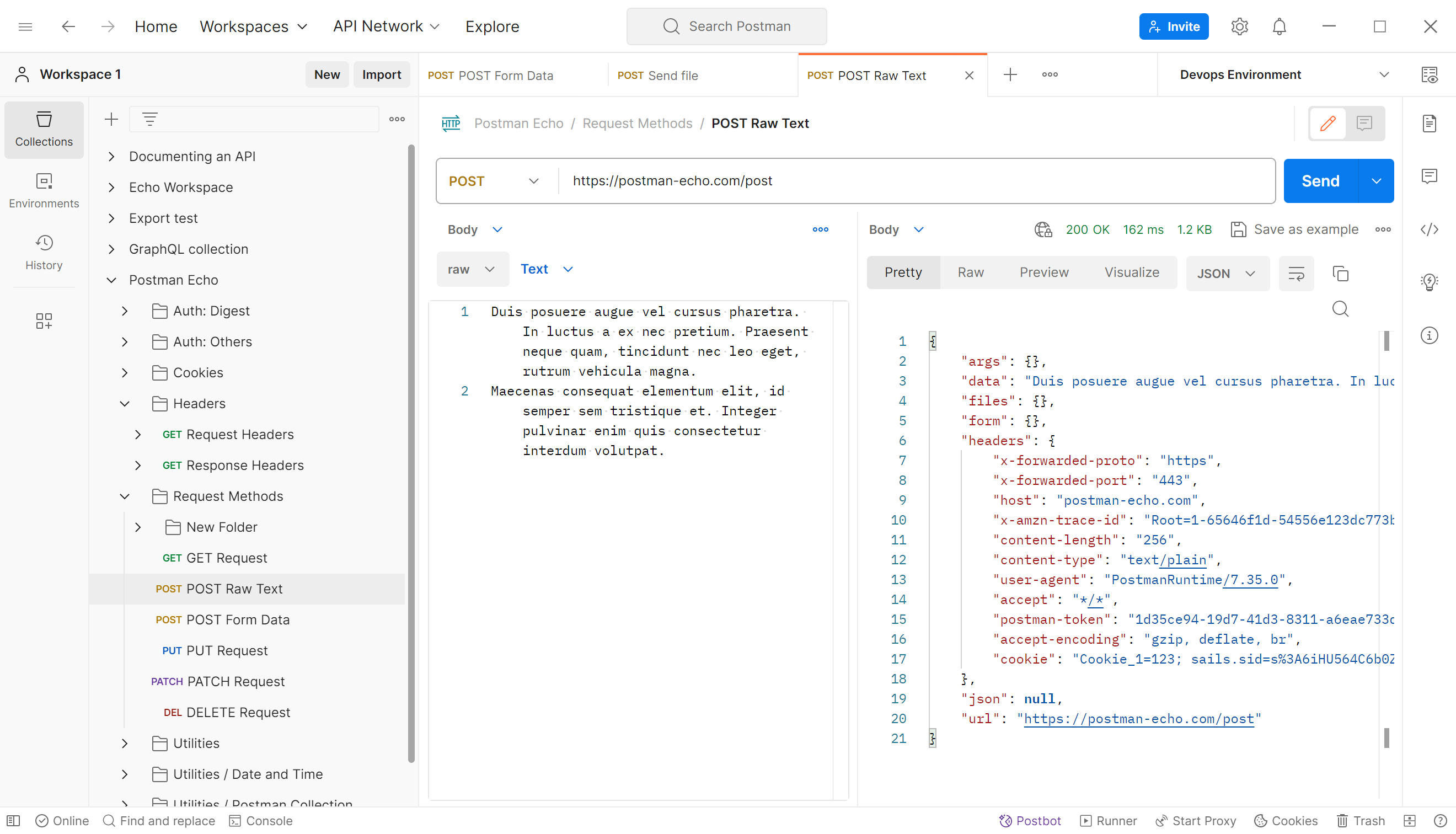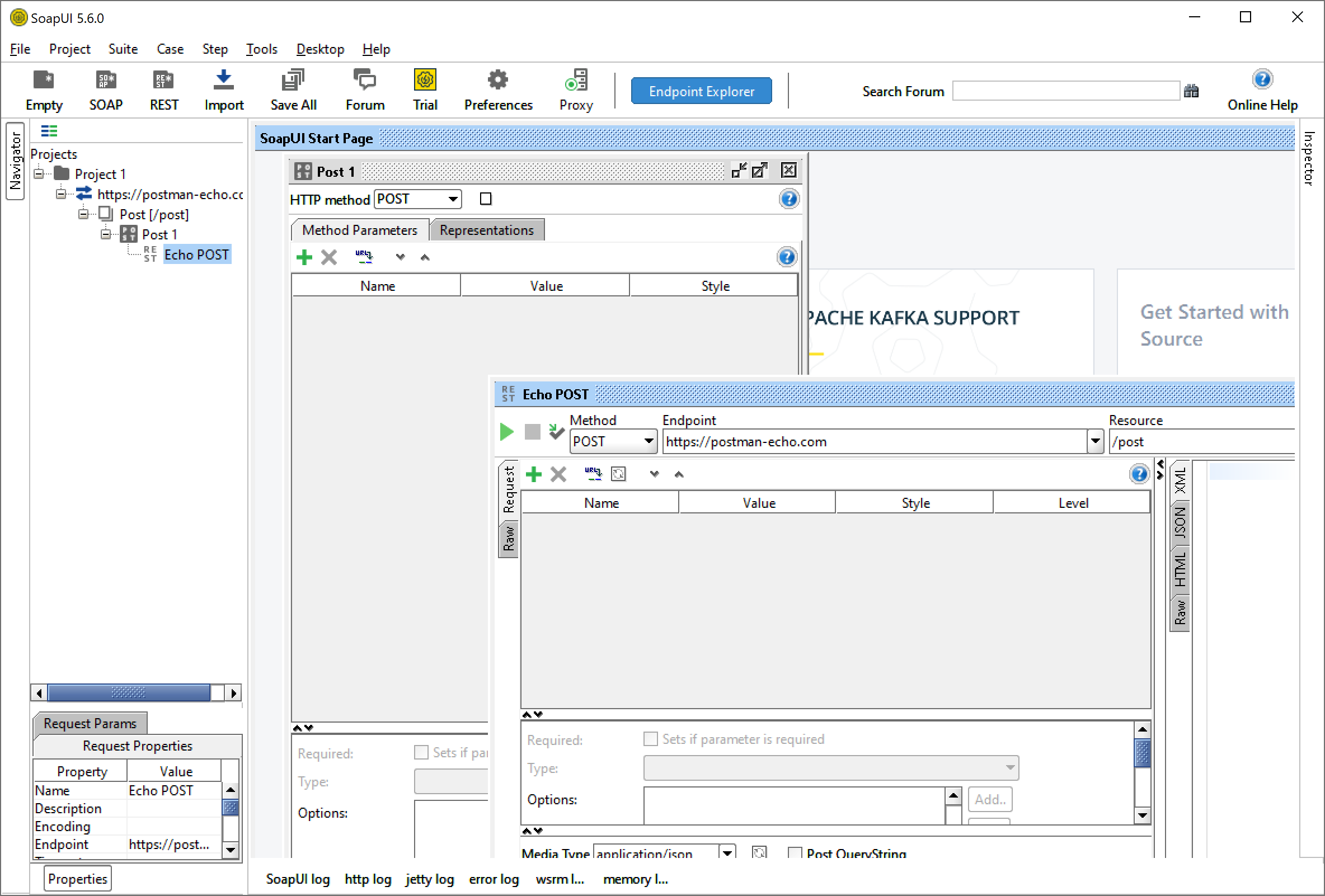
Postman vs SoapUI – Best tool for API testing in 2025
In this article, we will make a detailed comparison of the functionality of Postman and SoapUI and find out which tool is better for testing REST API in 2025. Choosing the right API testing tool is crucial for efficient development and seamless integration of APIs. Let's quickly take a look at the pros and cons of the two most popular testing tools.
Postman
Postman is the most popular and well-known API testing tool. It was originally created in 2014 as an extension for the Chrome browser. Postman later became available as a desktop application for Windows, Mac and Linux.
Postman has a wide range of features, including the ability to create and manage API requests, write and run automated tests, and collaborate with team members. It also offers a user-friendly interface and a wide range of integrations with other tools and services.

Despite all the advantages and versatility, recently many users are looking for a replacement. We recently covered in a large review the 10 best Postman alternatives in 2025.
Key features
Let's look at the main features of the Postman API testing tool.
- Automated testing: Postman supports automated testing, allowing users to run tests automatically and receive test results in real-time.
- User-friendly interface: Postman has a user-friendly interface that makes it easy to create, organize, and run API tests.
- Mock servers: Postman allows users to create mock servers for testing APIs, making it possible to test APIs without having to set up a real server.
- Integration with other tools: Postman integrates with other tools like Jira, GitHub, and Slack, making it easy to incorporate API testing into the software development workflow.
- Collaboration: Postman allows users to collaborate on API testing projects with team members, making it easy to share test cases and results.
- Collection and environment management: Postman allows users to organize their API tests into collections and manage different environments for testing.
User comments from AlternativeTo
I'm using Postman when developing using REST APIs and have so far not run into any issues. It has pretty cool features, it's really powerful than most people think
I used to like Postman for getting some quick API testing done, but it's been crippled so much recently that it basically forces you to log in to do even the most basic stuff.
Was great but Postman now hold your data hostage. Opened the app one day and there had been an update that now locks all your local projects, collection, secrets, etc behind a cloud account. You cannot get to your configuration anymore unless you create a cloud account. Huge dick move by the company and I will not support that kind of behaviour. Looking for alternatives now.
Overall, Postman is a user-friendly API testing tool with a wide range of features and capabilities for API testing. Its user-friendly interface, variable and environment management, automated testing, collaboration, mock servers, and integration with other tools make it a popular choice for developers and testers.
SoapUI
SoapUI is an open source testing tool that has been around since before Postman came along in 2012. SoapUI makes it easy to create, manage and run end-to-end tests for REST, SOAP and GraphQL APIs, JMS, JDBC and other web services so you can deliver software faster than ever.
SoapUI is a java based and hence runs on several operating systems (Windows, Mac, Linux). It requires a 1.8 version of JRE and at least 1GB of memory along with 200MB of disk space. Below is how the actual SoapUI looks like, consisting of WSDL files, XML data, etc.

Key features
Let's take a look at the features of SoapUI, which is the main alternative for Postman.
- SoapUI provides an Easy-to-use interface, Users can import a WSDL file, and the project is set up for testing, whereas, in Postman, each service URL has to be checked with required methods such as POST, GET, etc.
- In Soap, functional test cases can be reused as load test cases, whereas in Postman, the collection of REST calls can be saved for future execution.
- SoapUI allows easy test creation, with drag and drop functionality which makes task such as working with JSON or XML easier, whereas Postman allows writing Boolean test cases.
- In SoapUI, functional test cases can be reused as load test cases, whereas in Postman, the collection of REST calls can be saved for future execution.
- Data-Driven Testing. SoapUI test faster and smarter with data-driven testing, increasing your API testing coverage overnight.
- SoapUI supports many third-party plugins such as SOA DataPro, Agile Testware, and TestMaker, making it easier to integrate with Eclipse, Maven, and NetBeans.
User comments from AlternativeTo
Whether you're testing SOAP or RESTful web services, SoapUI has that support. There's the intuitive and user-friendly interface. Navigating through the tool feels like a breeze, even for those new to API testing.
SoapUI is Free for REST and SOAP, but if you want something more like GraphQL or gRPC – still you have to pay. On the other hand you have those in Postman in a free plan.
I use SoapUI often but feel that it is not very user friendly. The ui is not very intuitive. SoapUI gets difficult to make new configurations. It helps us test third party APIs, the response and request structure and integrate the same into our application.
In conclusion, both Postman and SoapUI are powerful REST tools for API testing, each with their own strengths and features. While Postman features a user-friendly interface and collaboration capabilities, SoapUI provides a complete set of features for testing web services. The choice between the two tools ultimately depends on your specific requirements and preferences.
When making your decision, be sure to evaluate factors such as the complexity of your API, team collaboration needs, and individual skill sets. Try both tools and see which one suits your needs best. Whether you choose Postman or SoapUI, these tools will undoubtedly improve your API testing process and help you create high-quality software.
NativeRest
NativeRest is high-performance and memory efficient REST Client for Windows. Desktop application is not using Electron, thanks to this, NativeRest is incredibly fast and consumes very little memory. It's combines an easy-to-use interface with advanced functionality like environment variables, authentication helpers and code generation.
NativeRest is a great alternative to Postman and SoapUI, especially if you don't need the rich feature set that Postman provides. The simplicity and freshness of the NativeRest interface will allow you to take a fresh look at creating and testing REST APIs.

Key features
Let's take a look at the features of NativeRest is a new tool for creating and testing APIs.
- High-performance and memory efficient. NativeRest is 100% native application, that is compiled for different platforms. It starts fast, uses less memory and CPU.
- Working in offline mode. NativeRest can be used without internet connection. You decide to use only local workspaces or additionally create cloud workspaces.
- Simple testing. NativeRest provides a way to easily test your API. Use single line tests to check status, time, body, headers, cookies of response.
- Generating code snippets. You can generate code snippets in various languages and frameworks within NativeRest. Over fifteen different languages.
- Full-featured portable version. NativeRest is available in a portable version as well. The portable version is distributed as a single executable file and does not require administrator privileges.
- Import and export data. You can import data from other REST clients such as Postman, SoapUI. You can migrate without loss earlier created collections, environments and variables.
- NativeRest is a multilingual HTTP client that supports multiple languages. Currently, it supports 10 languages, including English, Spanish, Portuguese, French, German, Russian, Bulgarian, Simplified Chinese, Traditional Chinese, Japanese. NativeRest uses system language by default. You can change the language in settings without restarting app.
User comments from AlternativeTo
Great alternative to Postman for Windows. Requires low RAM and runs fast, GUI is very responsive. Special thanks for the powerful environment variables. Thanks dev!
I've been using Postman for 5 years, but today it has become incredibly slow. The performance of NativeRest is amazing. Wow. Other clients based on Electron are very slow and eat up all RAM. NativeRest allowed me to import all collections from Postman.
This application does not support the gRPC protocol, which I am using in my new project. I hope that the set of functions and capabilities will expand over time. There is also no version for Mac yet.
NativeRest is a new tool for creating, debugging and testing APIs. Some of its features are unique and not available in SoapUI and Postman. Try the fastest REST API client and tell your friends.
See description of all features on NativeRest page.